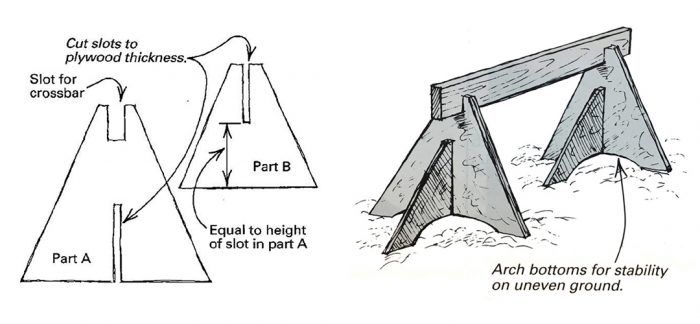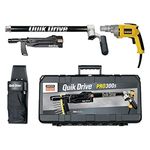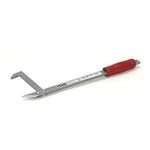
I have been following the endless parade of sawhorses that have hoofed across the pages of your magazine for the past few years. In all but a few there is one common feature that is the downfall of most sawhorses: metal fasteners. The metal in horses that are held together with screws, nails, or hinges, no matter how careful you are, will eventually encounter a spinning sawblade. The inevitable result is aggravation and lost money on a new blade.
The drawing shows the kind of sawhorses I use when I cut roofs. The design is simple, and the material is usually scrap plywood found on the job site. But best of all, these horses require no fasteners. The simple, interlocking plywood pieces allow for flat storage in the back of the truck, and the cutout for the crosspiece can be adjusted to accommodate any piece of lumber adequate to the task. I’ve found that with a load of 2×10 rafters, I need at least a 2×6 crosspiece to support a dozen or more rafters.
—William Raynes, Sunset, ME
Edited and Illustrated by Charles Miller
From Fine Homebuilding #97
Fine Homebuilding Recommended Products
Fine Homebuilding receives a commission for items purchased through links on this site, including Amazon Associates and other affiliate advertising programs.

QuikDrive PRO300s

Guardian Fall Protection Pee Vee

Ladder Stand Off






View Comments
The best yet.
This is a common concept that we called 'egg crating' in a former life. We used it in concrete formwork for floors when we had small areas of slab between concrete beams - it was a way to pad-up between the beams.
As far as the horses go, I would suggest a slight concave (or sloped) cut along the bottom to insure that the (4) ends contact the floor or ground first - in essence providing 4 'feet' bearing on the floor. This helps to minimize wobble should wood scraps get under the bottom edge.
There-ya-go...we've used a design very similar to this for over 50 yr.s. Store/transport flat, and depending on the runner, you can make them as long as you want, or you can put a support in the middle. We've had these 40" long, 8 across.